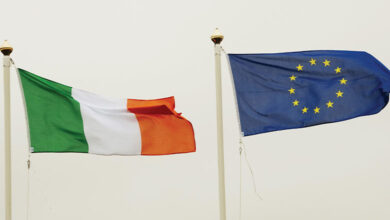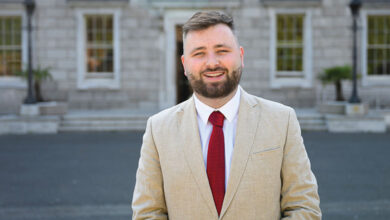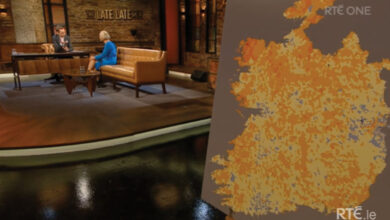Covid-19 and Ireland’s great trade reset
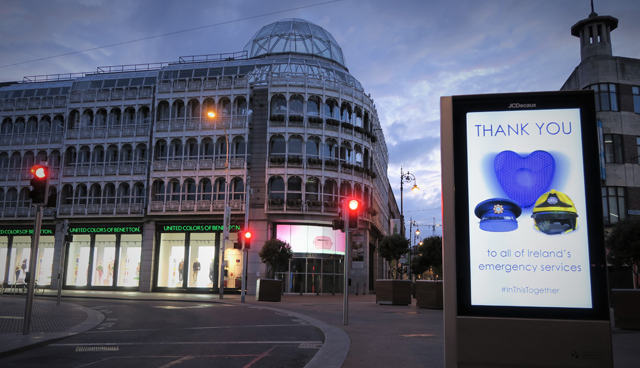
Ireland has experienced significant technological advancements over recent decades. What revolutionary changes may be in store for us over the next 10 years, with or without pandemics? John Whelan, former CEO of the Irish Exporters Association, writes.
Significant new technological developments and societal shifts occurred during the past decade. Many of these developments became so quickly engrained in our daily lives that they often went relatively unnoticed. By good fortune as much as good policy, many of the global leaders driving the adoption of these new technologies decided on an Irish base from which to develop and promote their technologies across Europe, the Middle East and Africa.
Over this next decade, similar rapid and meaningful advancements are expected to occur in the post-Covid-19 era, but will global tech giants continue to favour Ireland?
The early years
There has been a dramatic shift in what we work at in Ireland since we turned into the new century. In the last 20 years Ireland has shifted from being a producer of manufactured goods and agri-food to a high-end services exporting economy.
Increasingly services sold internationally have become the main driver of Irelands export growth over the past two decades, rising from €19 billion in 2000 to €213 billion in 2019.
For the period 2000-2004, Financial Services exports were the main driver of growth as the IFSC expanded in Dublin. Since then, computer services, and the wider ICT sector has been the dominant sector accounting for over half of the total last year. Business services grew strongly before the financial crisis but has slowed in recent years. Computer services has benefitted from businesses moving their IT operations to the Cloud and the explosive expansion of mobile devices by the global population at large.
Pre-Covid-19 boom
Pre-Covid-19 services exports from Ireland were at an all-time high and expanding with each new IT device launched onto global markets. The combined growth of all services exports from Ireland according to the United Nation’s Trade and Development Trade Report for last year, ranked the country as the 6th largest global exporter of services and the fastest growing at 15.5 per cent, beating the second-placed UK whose services exports continued to grow (+10.9 per cent) last year despite the financial markets concerns over Brexit.
There is however some evidence that the bumbling Brexit process at Westminster has also been working in Ireland’s favour since their 2016 referendum to leave the EU.
More convincing evidence indicates the boom is driven by the growing number of tech and social media companies in Ireland, providing global data processing capacity for Googling, watching YouTube, sending pictures by WhatsApp, using the GPS in your car or buying over Amazon.
There are currently 53 data centres active in Ireland. It is estimates that a total spend of €4.5 billion will go to creating 42 new centres in the period to 2025. Ireland is now recognised as the largest data centre cluster in Europe, retaining its tier one status through its ability to innovate and change to meet the rapid advances in the world of data.
There are however other good reasons why the internet giants have chosen to expand in Ireland rather than in France where President Macron has provoked the ire of US president Trump with his announcement of the Digital Tax on the US internet behemoths or Spain where a digital tax legislation was passed in January, or in the Brexit torn UK which still found time to announce a Digital tax, all of whom present worrying tendencies to attack the accounting practices of the Silicon Valley giants. Ireland by comparison, has been standing shoulder square with these global players who have settled in Ireland, by pushing for the continuity of the status quo and urging the European Commission to hold back until the OECD comes up with a global solution. As EU tax decisions must be taken unanimously Ireland can for now block any EU level deal.
The OECD is working on a draft deal, which it officially aims to have ready in 2020, most likely for a summit of the Group of 20 economic powers towards the end of the year. Ireland has committed to accepting the broader OECD deal, which also has the support of the United States, Japan, Mexico and others, as a more balanced approach.
Post-Covid-19 expectations
The Covid-19 pandemic is creating a major shock to economies around the world, but already there are strong indications that some sectors have gained, others hit hard and some of them fatally.
The travel and leisure sector has borne the brunt of the downturn so far with sharp declines in airline bookings and various global travel restrictions in place. Most airlines are now facing technical bankruptcy, with IATA stating that a loss of €230 billion is expected in the industry this year.
However, despite the damage to the travel and leisure industry, Ireland is not exposed to heavy industry sectors, such as the motor industry which are also taking a hammering due to the pandemic.
Fortunately, Ireland’s major manufacturing export activity is in areas that tend to be safeguarded from major global shocks, which became evident in the financial crises of 2007/8. Pharmaceuticals and medical devices continue to be in high demand as does food, two of the major planks of our manufacturing industry.
Moreover, the lockdown associated with Covid-19 has been driving people to greater online contact and use of internet packages. Companies such as Zoom and Slack which provide work from home technologies, look set to actually benefit from Covid-19 fallout, alongside Twitter, Facebook and Netflix. To support this activity, cloud computing support companies such as Microsoft, IBM and Amazon (AWAS) who have extensive datacentres across Ireland are reporting a sharp increase in demand.
Despite the undoubted heavy burden created by the Covid-19 pandemic on businesses trading locally across Ireland, there is strong evidence that a smooth passage for Ireland’s main exporters is likely. Additionally, our strong multinational and indigenous tech industry is well placed to benefit from the longer term legacy that Covid-19 is widely expected to leave; of higher home working and greater on-line consumption, more online networking, more music and video streaming services and more online staffing to manage.
Profile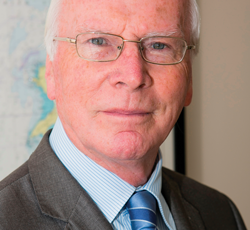
As well as contributing a regular column to the Irish Examiner, John Whelan is a managing partner with Linkage–Partnership.eu, an international trade consultancy, with offices in Ireland, The Netherlands and Switzerland. John is also an export industry adviser to the AIB Group and has previously held positions as chief executive of the Irish Exporters Association and chairman of the Institute of International Trade of Ireland.

